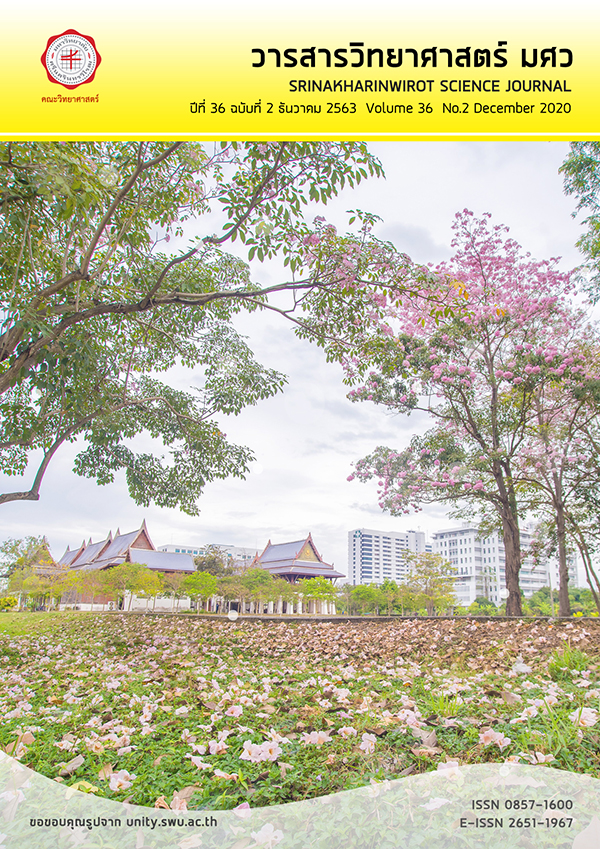Learning Outcomes on Chemical Hazard Using Problem-based Learning and Project-based Learning for Second-Year Undergraduates
Keywords:
Problem-based learning, Project-based learning, Self-directed learning, Chemical hazardAbstract
The aims of this research were 1) to compare the learning achievement on chemical hazard of the second year undergraduate students between before and after learning using problem-based learning, project-based learning, and self-directed learning, 2) to study the students’ learning outcomes, and 3) to study students'satisfaction towards learning. The sample group was one classroom (n=31) of the second year undergraduate students of the faculty of science by using purposive sampling. The research tools consisted of 1) the textbook on chemical hazard, 2) the lesson plans, 3) the leaning achievement test, 4) the assessment forms for students’ works, and 5) the students’ satisfaction questionnaire. The results showed that 1) the mean scores of learning achievement of post-test were higher than those of pretest at the statistically significant .05 level, 2) the learning outcomes of the participants have mean score at 82.92%, which was 70 percent higher than that of criteria at the statistically significant .05 level, and 4) the students’ satisfaction towards the learning on chemical hazard was at very good level of satisfaction.Downloads
Download data is not yet available.
Downloads
Published
2020-12-28
How to Cite
Koocharoenpisal, N. .-. (2020). Learning Outcomes on Chemical Hazard Using Problem-based Learning and Project-based Learning for Second-Year Undergraduates. Science Essence Journal, 36(2), 1–20. Retrieved from https://ejournals.swu.ac.th/index.php/sej/article/view/11381
Issue
Section
Research Article








